September 3, 2017
Martha O'Kennon
Wonderful coolish days and cool sleepworthy nights. For the first time, I have turned off the air conditioner for almost a week now. Meanwhile the colors just keep coming. Here is a little green sweat bee in a pretty orange marigold. The asters bloom in the back yard, and the black-eyed susan there has bloomed and bloomed as if to make up for a long period free of black-eyed susans.
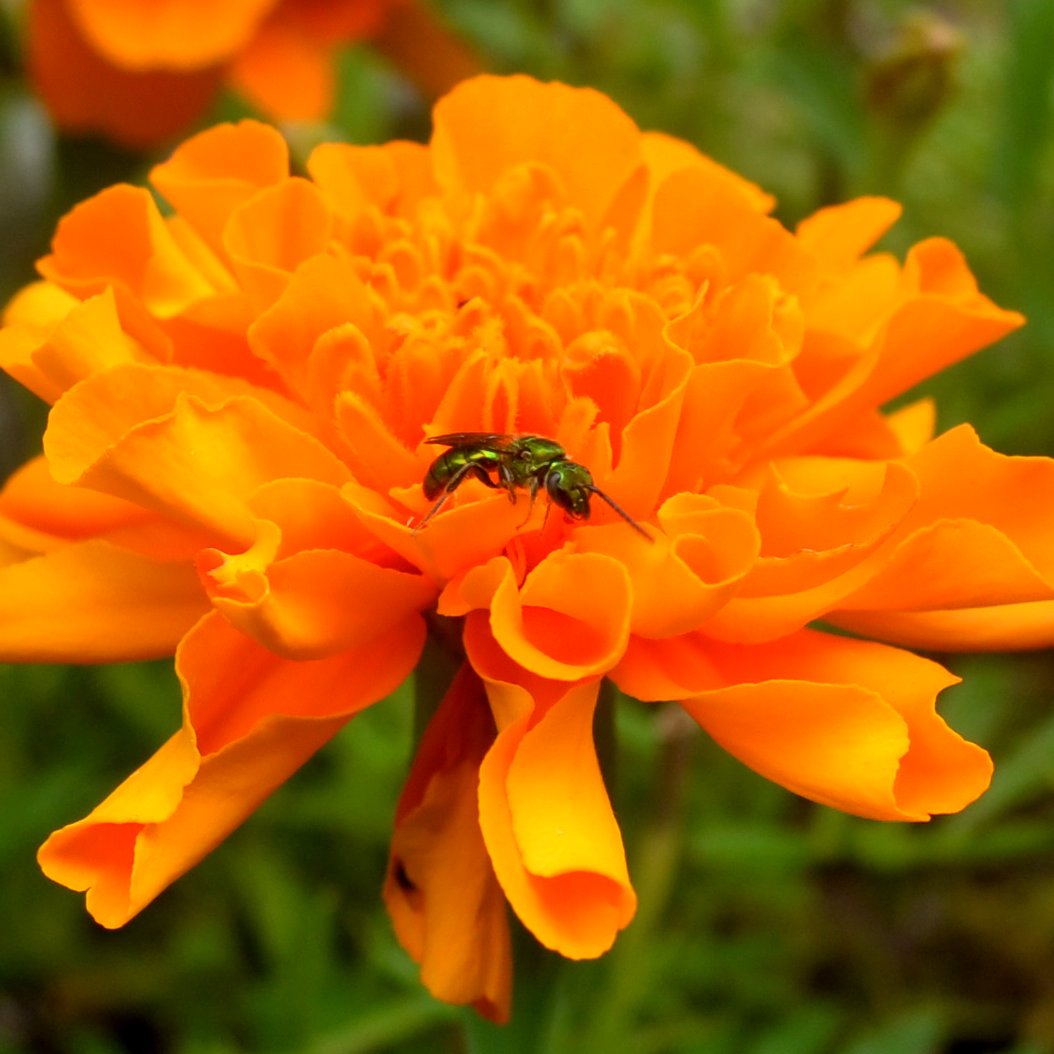
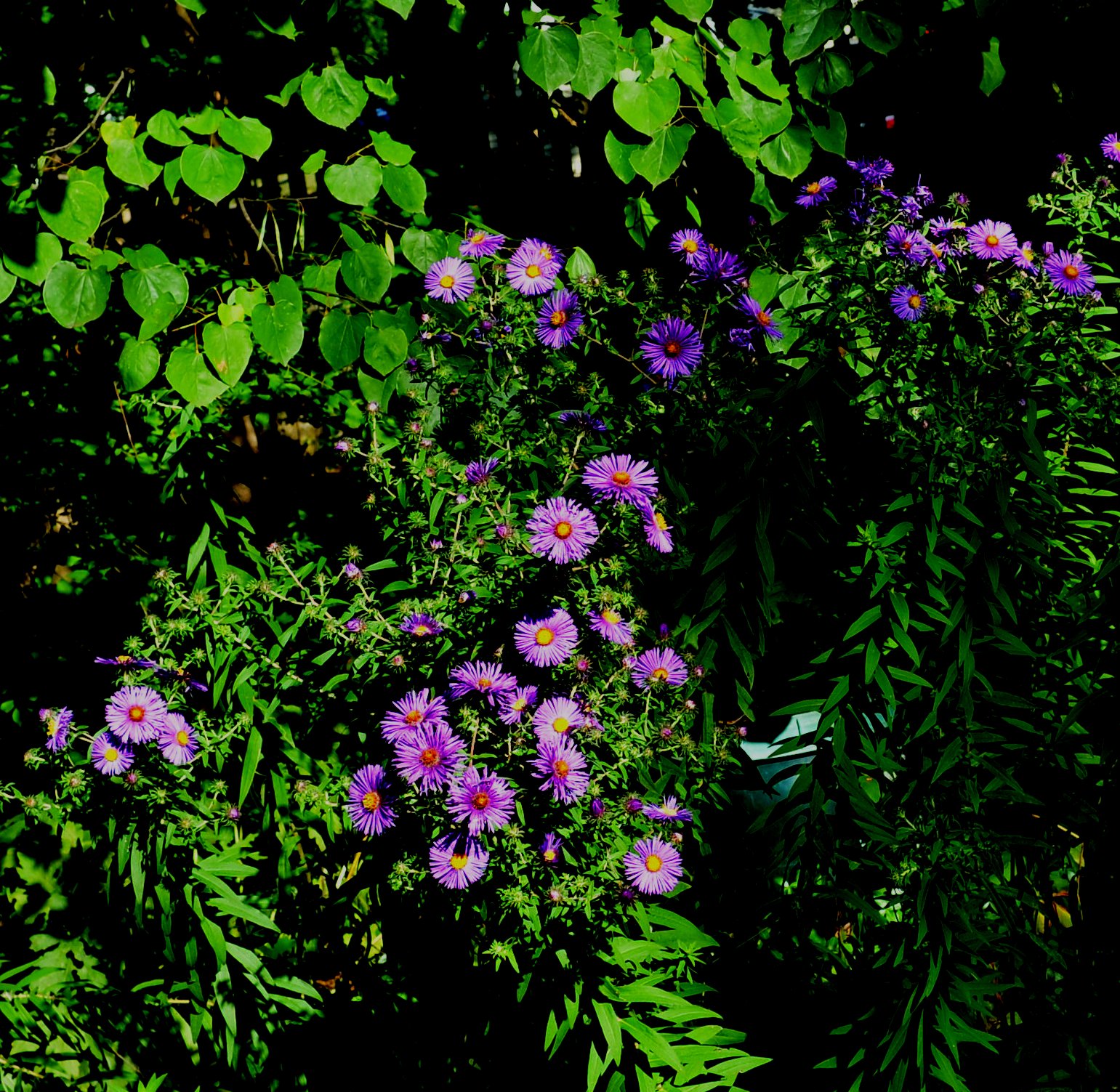
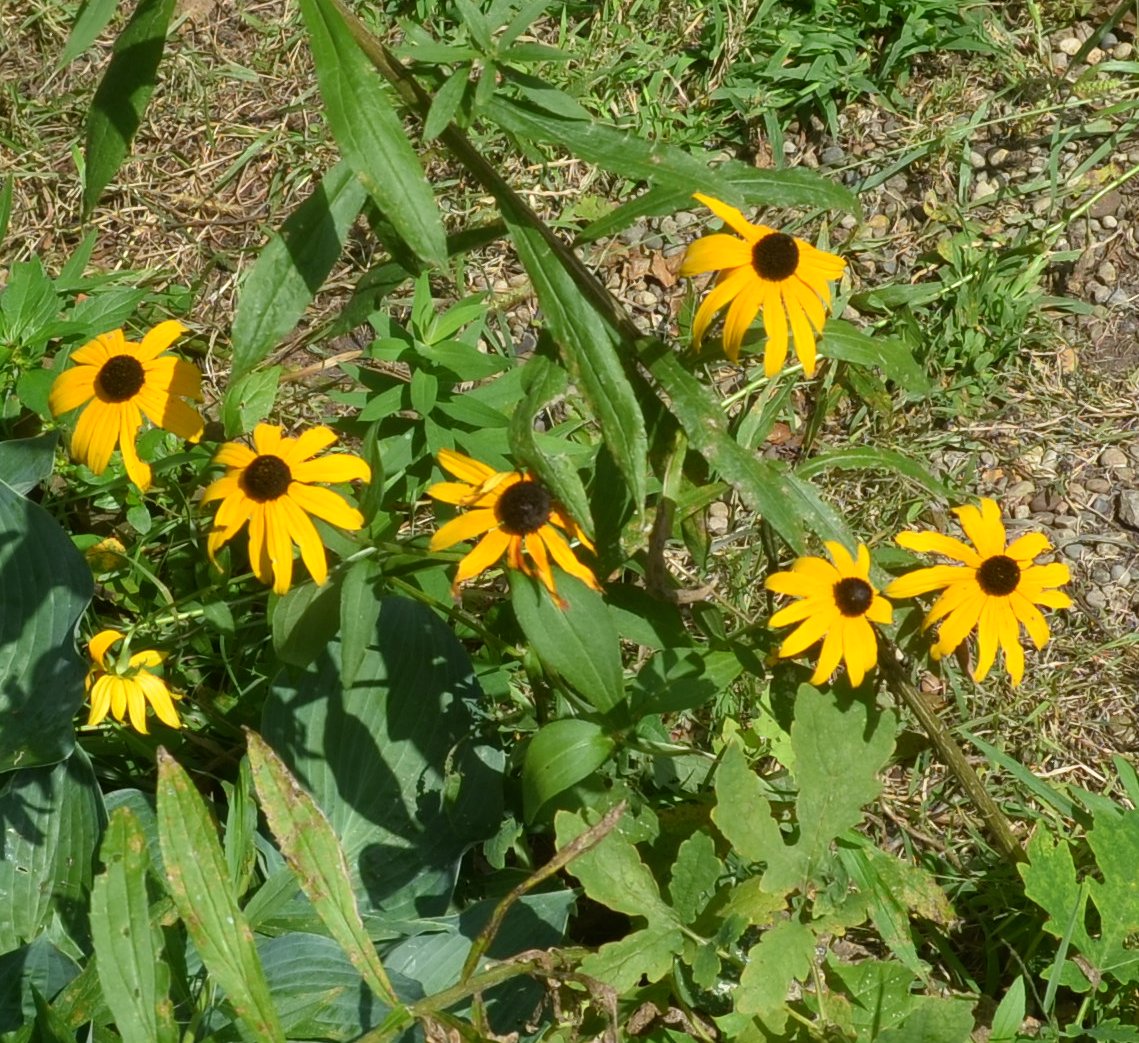
Remember that there is information in the name of the file for each image. You can see it by mousing over the image - look at the lower left of the screen. Or you can click on the image to get to the (usually) larger image. Then the info is displayed in the address line above. Sometimes the second click will actually display a different view of the original image.
Last week you rolled your eyes when I delivered a paean to goldenrod. It has actually come close to all blooming at once. Bees and wasps compete for the best blossom and bounce each other from the Elysian Fields. A bee-loud glade. All the lines from Brit Lit in 1957-8 come to mind as we listen to the hum of life going on. Usually I start off with "ant", but this week I found a mysterious picture that looks like a lady in a horror movie if you look at it just right. "Animated" does come before "ant". alphabetically. Is this an ant? More likely a diapriid, which looks like a tiny winged ant. And here is an ant as folded neatly by a spider. And an ant that is so tiny it barely showed up in this image of a bolt on the shop wall.
,
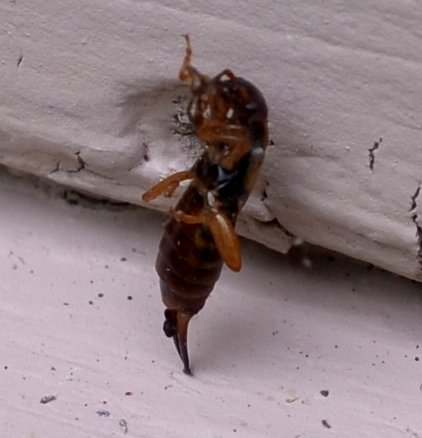

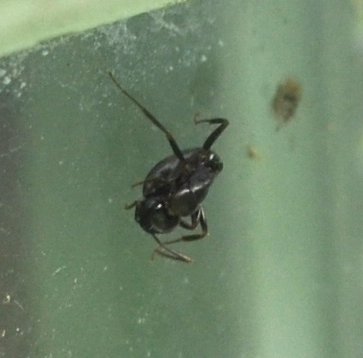
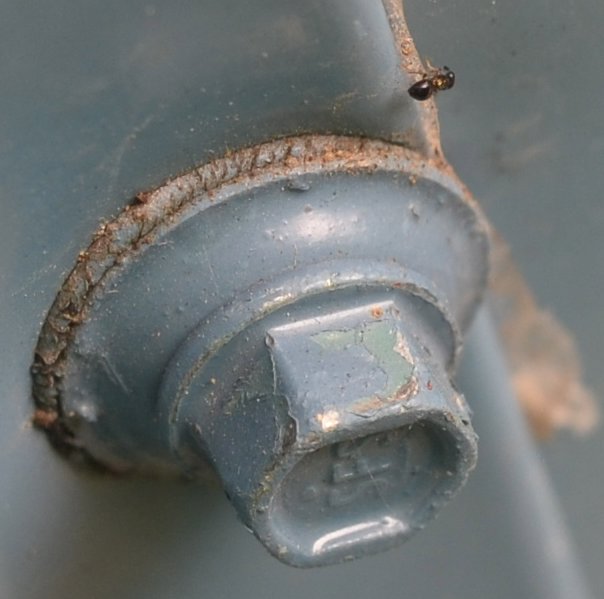
Another try for the green aphids. They don't seem to have managed to keep going on the goldenrod this summer, but still appear one by one with a long space in between. But the barklouses keep showing up. Some are hard to see and even harder to identify. The right-most one is probably a nymph.



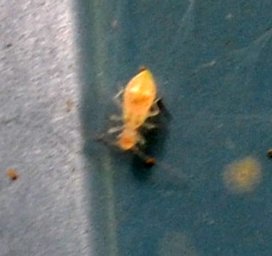
A tiny bumblebee feasts on the goldenrod, while another tries to rub off the moisture after a good rain. If scruffiness is a characteristic of the common eastern bumblebee, then this one is one of them.
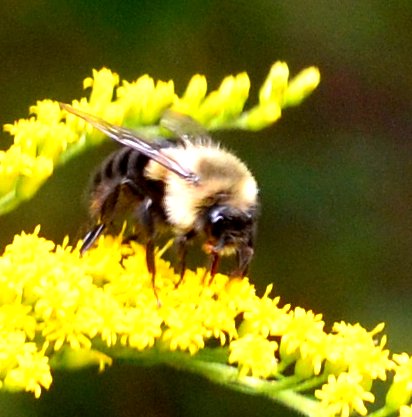
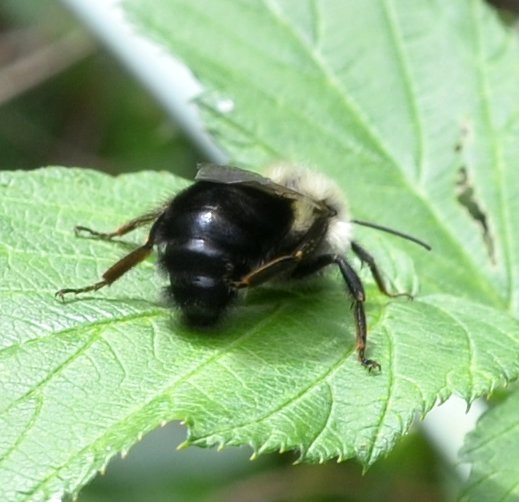
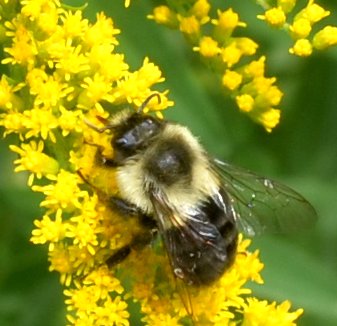
Here are a "regular" honey bee; what I believe because of its odd pollen distribution is Andrena nubecula (or was last year); another sweat bee but gold/copper, not green; and a bee whose whole face seems to be a little mirror. I think you can spot the camera in there.
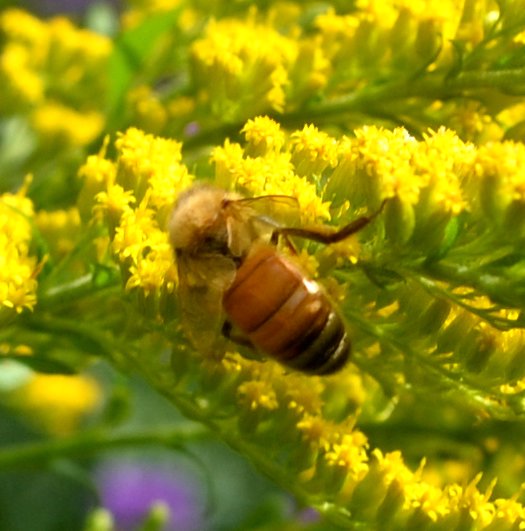
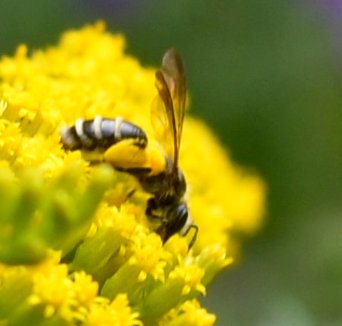
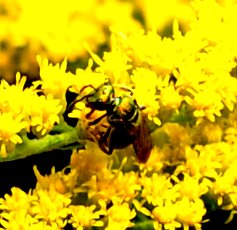
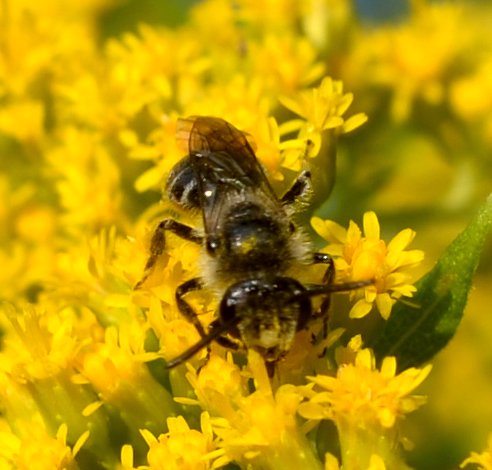
The black blister beetle was back for a day or two this week. So were the fourteen-spotted lady beetle and the Asian lady beetles. The fourth image is from a photo in the Goodrich Chapel milkweed bed, and is the larva of the Asian beetle.
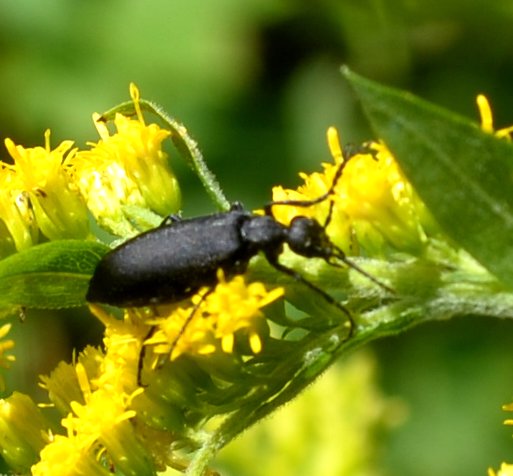
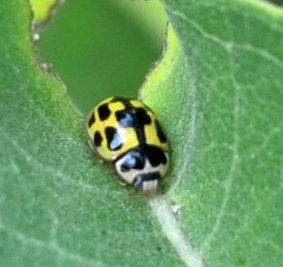
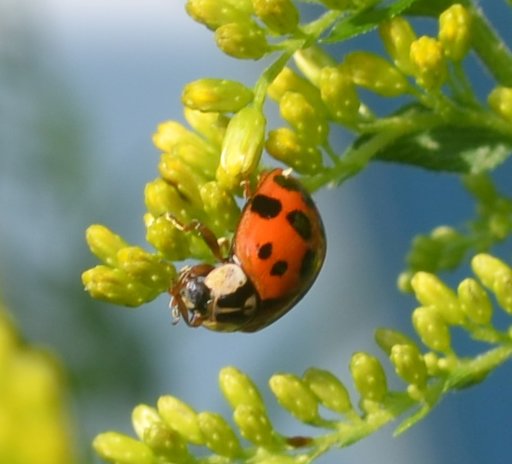
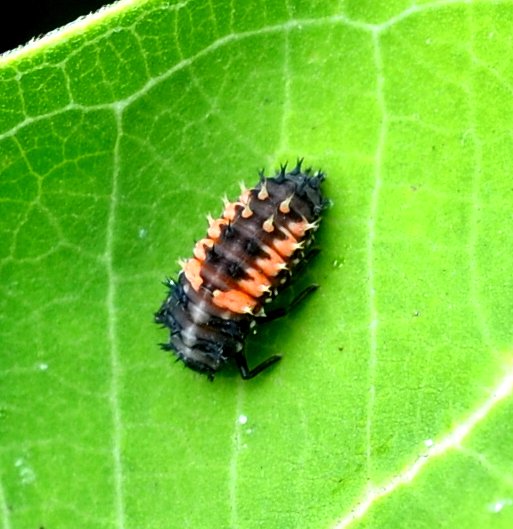
I never have had so many Locust Borer beetles as this summer, maybe three or four,neatly distrbuted in the goldenrod. The next two are Mysteries!
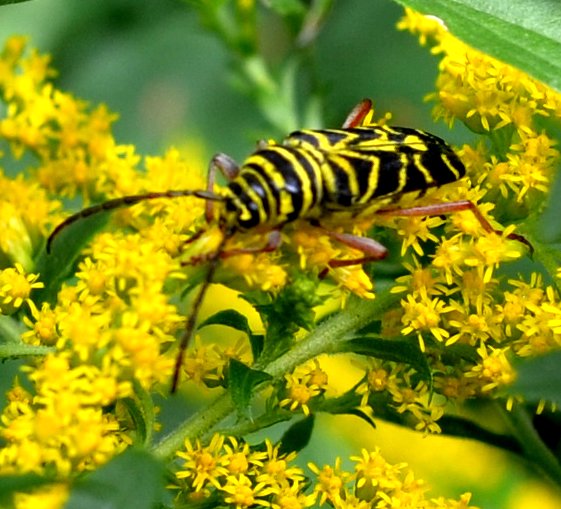
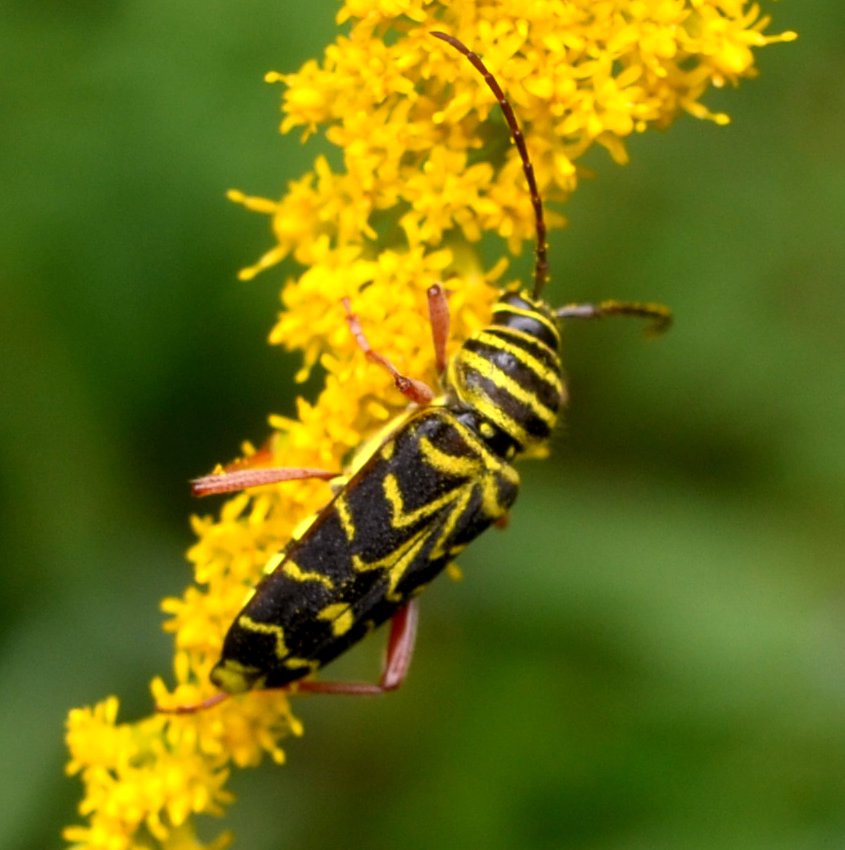
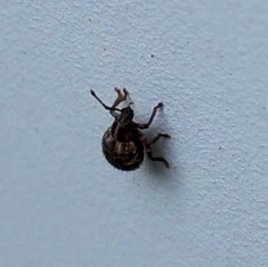
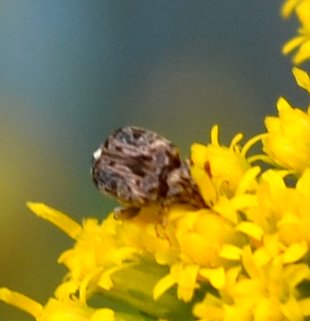
Here is another of those ambush bugs, a very dark variety. Maybe it's a gender difference. Here is one of them finishing off some prey. Yum!
This next one is the Western Conifer Seed Bug, which we see every year about now. The last image is of another of the same, except that the two both have a missing leg, but on one it's the left and on the other it's the right. This is (as you may recall) one of the leaf-footed bugs, and fortunately each has one leaf-footed leg (the rear). Can you make out the swollen feature on the hind legs?
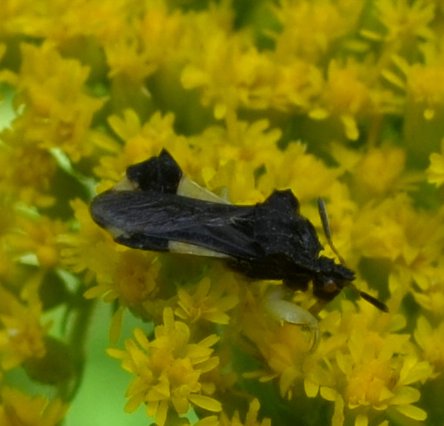
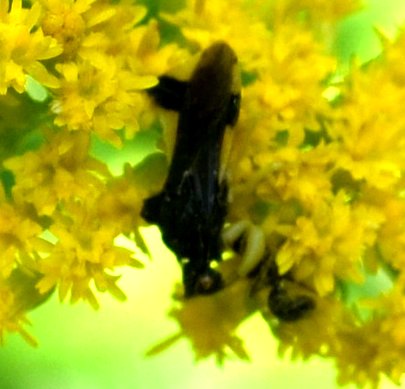
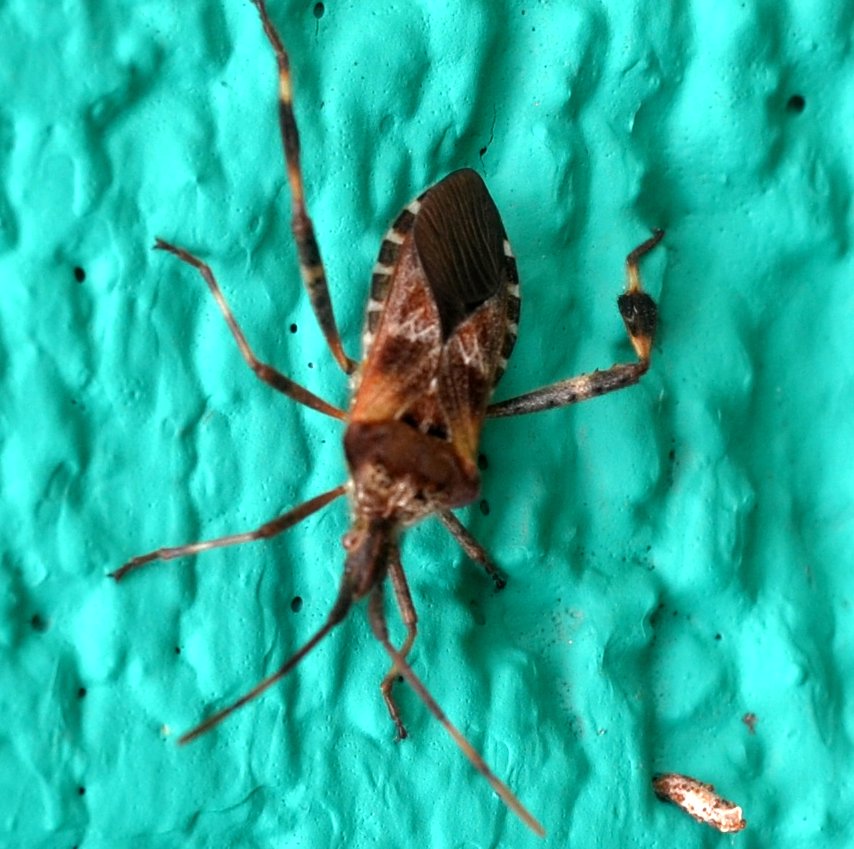
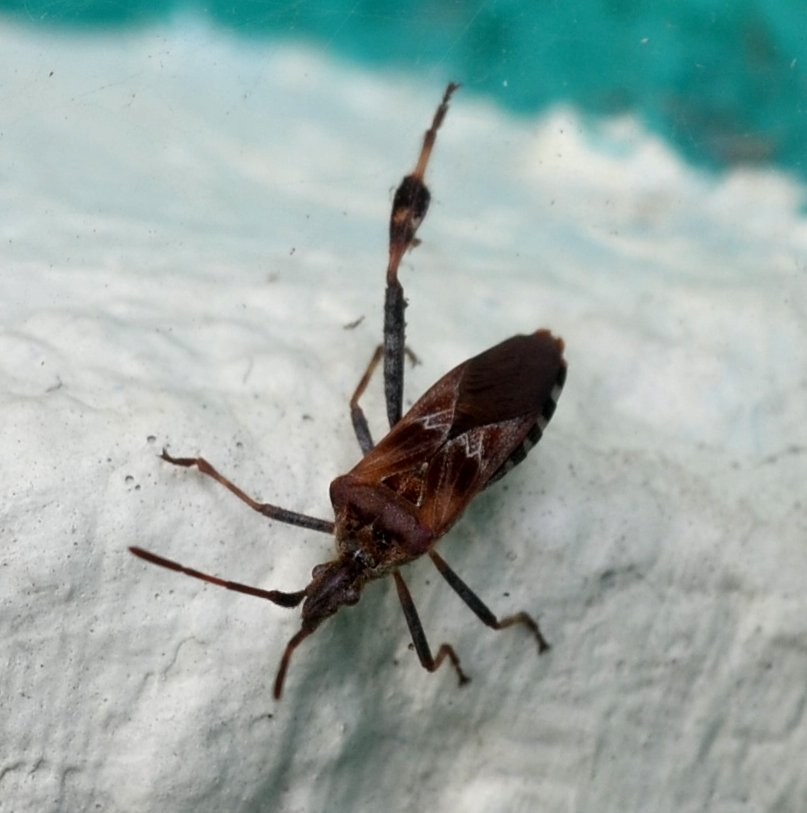
The week was a promising one for leafhoppers. Of course the candy-striper has been in its element since the Goldenrod Cafe opened for the year. And now you also have seen quite a bit of the adult Coelidia olitoria. Here are two avatars of it.
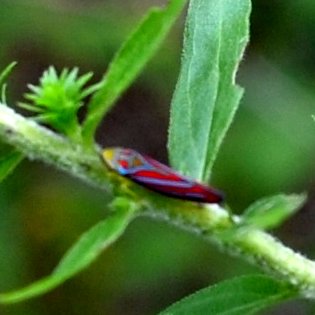
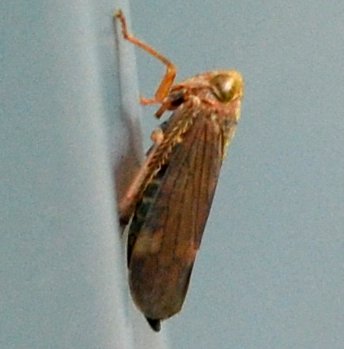
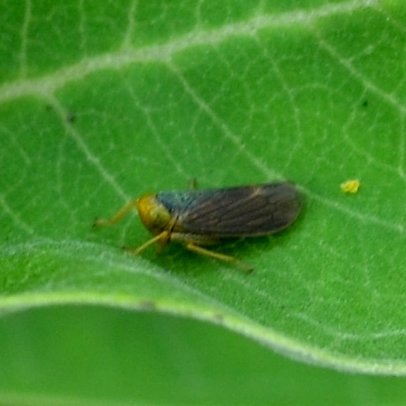
More leafhoppers. Genus Eratoneura has the dottier pattern. Then there's Erythroneura, which has a quite distinctive pattern. Both of these genera have several species within them, each with a slight or vivid color variation. I think these last two are new to me.
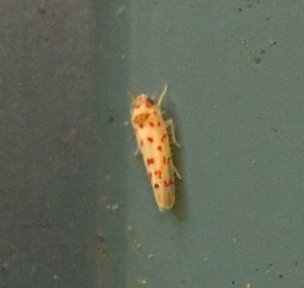
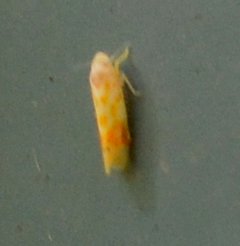
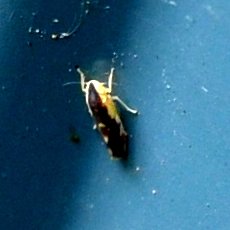

Of course there were a couple of stink bugs, the reddish one we've seen for weeks now. Look how its color and pattern change when we take the picture from another angle. The third one may or may not be the same species. But I like to think it is purple on top and red on the bottom.
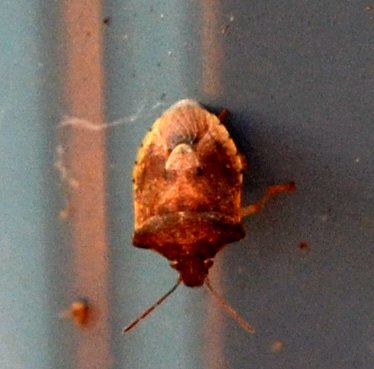
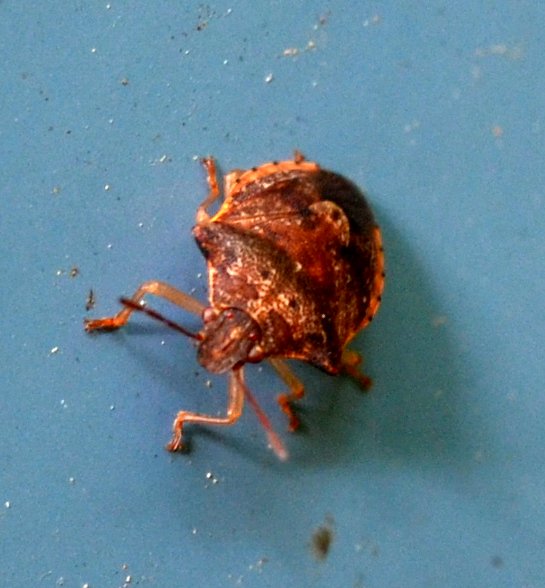
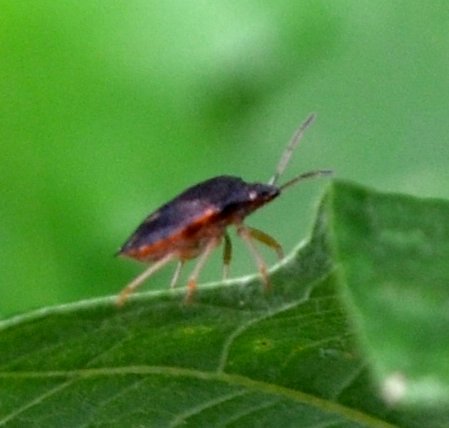
At Goodrich again, I found this Large Milkweed Bug, and then a pile of baby Milkweed bugs (Large or small, I can't tell.)But at home, I was introduced to a very strange little creature. At first I thought it was a spider. But now I'm back to seeing it as a bug - and going through some changes. I wonder if the small one is an earlier instar of the larger one at the end of the row. What sets me thinking this way is (for one thing) the position of the little white bands just below the knees of them both.
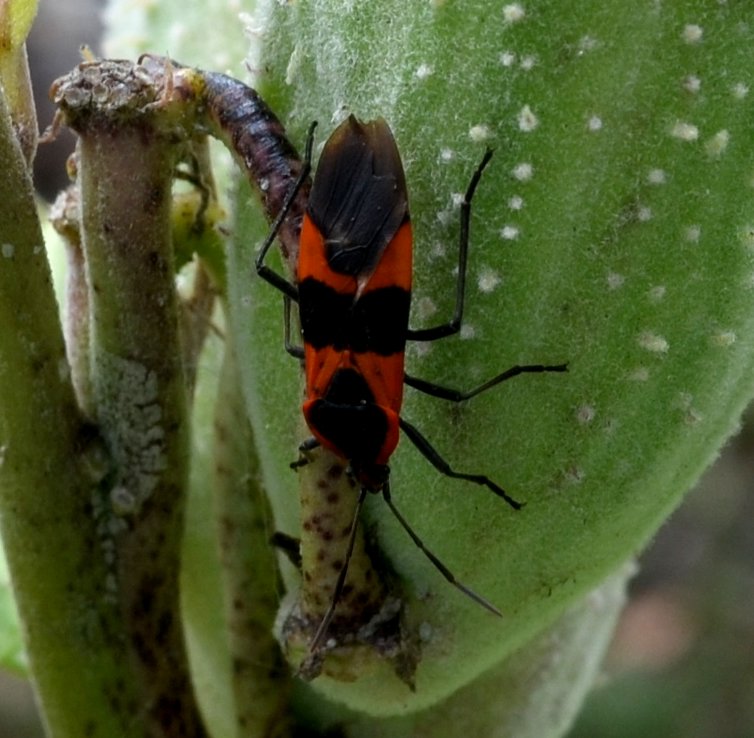

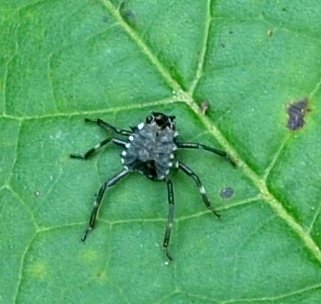
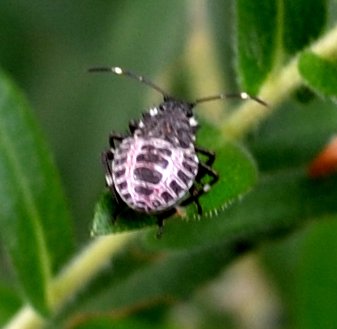
But back to the goldenrod. A Lygus plant bug is going to be a great lover of the yellow flowers. Here we see a Cabbage White Butterfly actually getting on with a Cerceris clypeata, sometimes called a "Weevil Wasp".
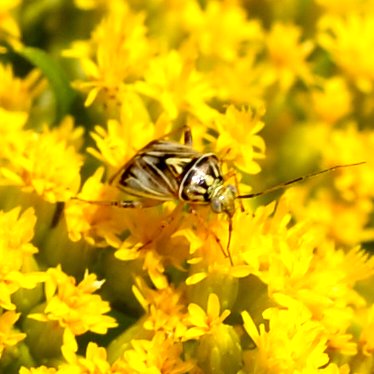
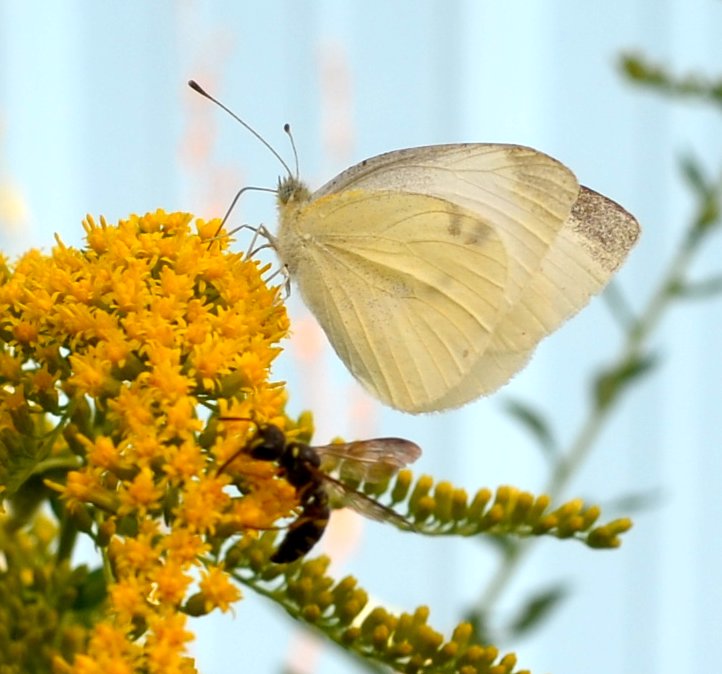
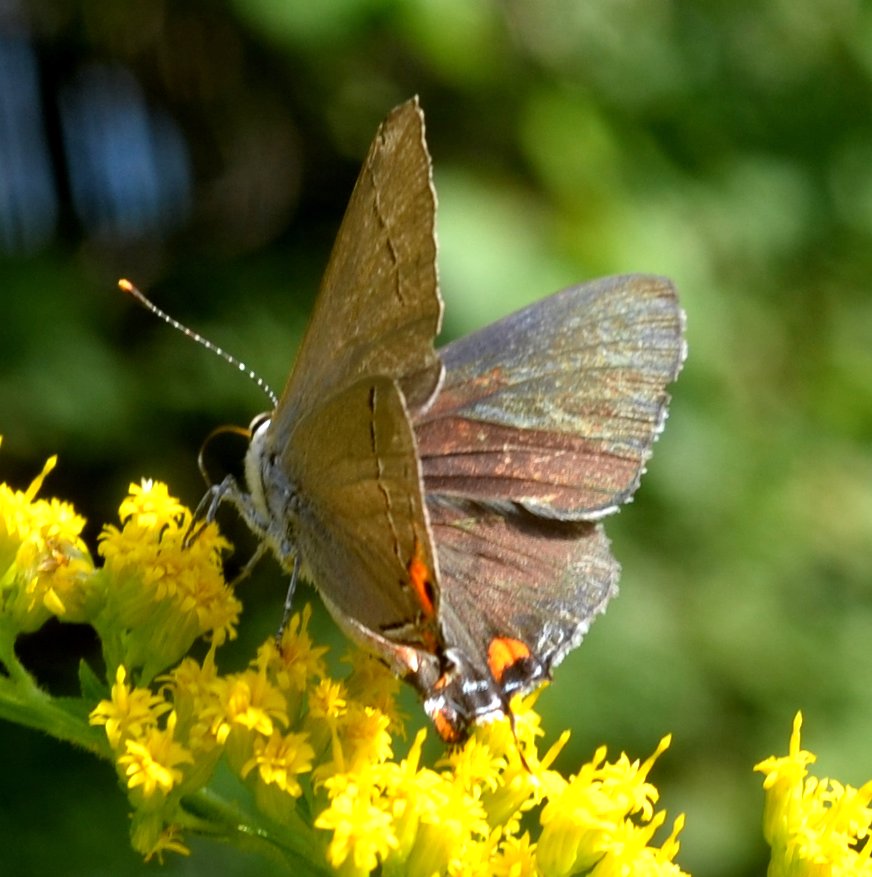
Even the earwigs love the goldenrod. And Here are the fishes enjoying the early fall. And an aqua fly.
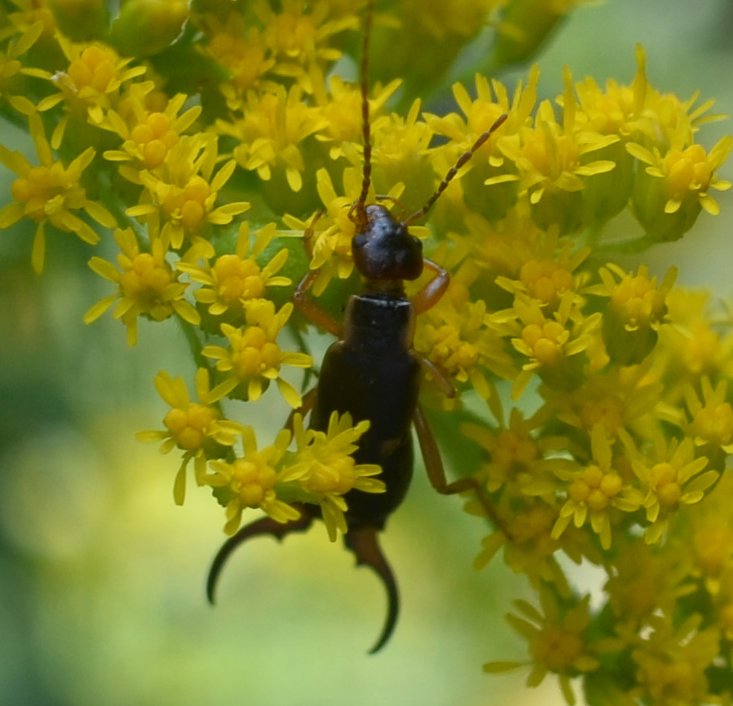
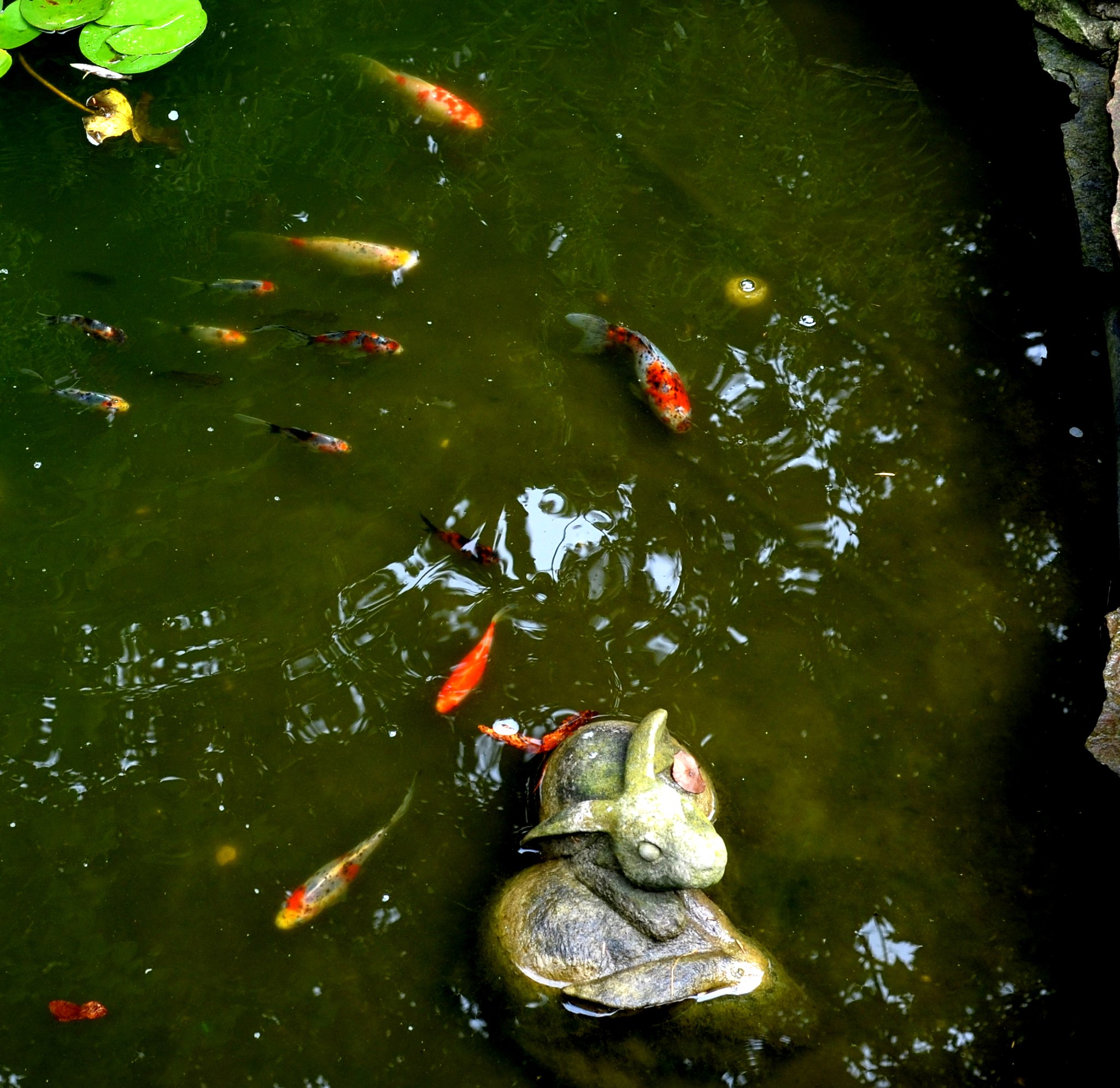
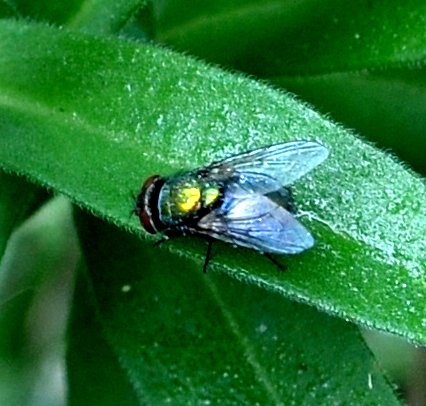
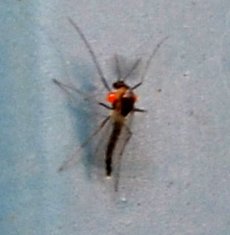
Here are some more flies. These little fellows are hover-flies. They make up a very large and fascinating family.
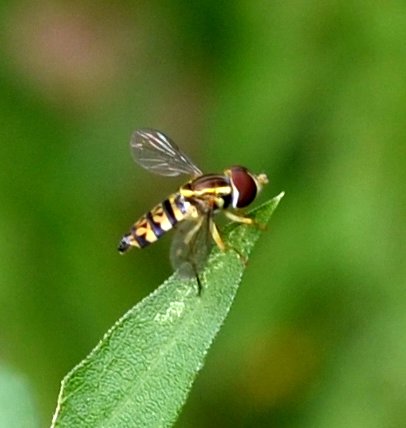
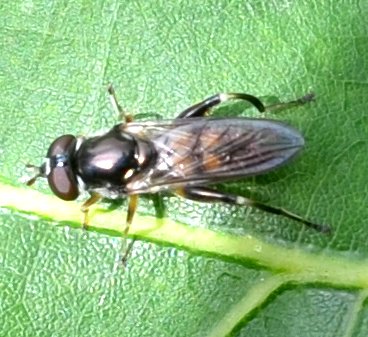
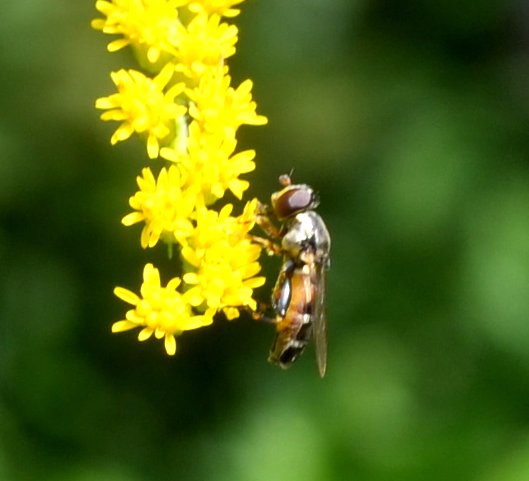
One of the things that makes them so fascinating is their ability to mimic other creatures. We've seen ant-mimics and wasp-mimics. Here is one of the latter as I saw it this past week. I hadn't seen one of them for two years. I still remember how this large wasp that I'd been photographing began to fly about my head buzzing loudly. I backed away and went in to crop and process the pictures. When I saw those huge fly eyes I started to laugh. I'd heard of these wasp-mimics, but didn't expect to find one here! The last two pictures were taken yesterday and show the eyes particularly.


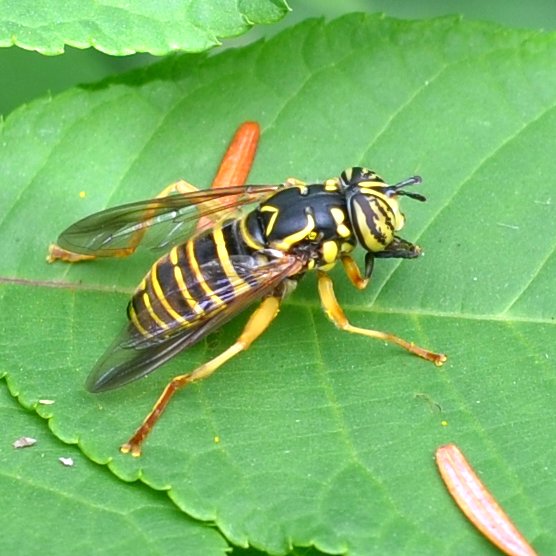
Some more flies. First is an almost unbelievable concoction - A kind of crane fly that you first want to reject. You might think it's a plume moth. But nope- it's a fly! It's followed by three different-looking little long-legged flies.

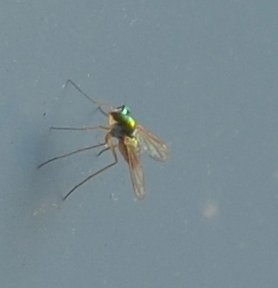
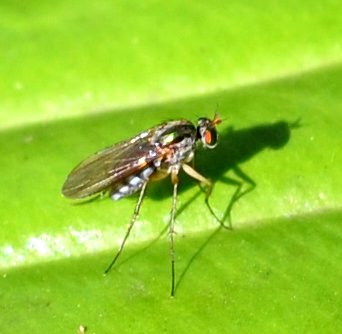
 .
.
Here we have a relative of the fruit fly, Minettia lupulina, a very strange creation but still some kind of fly,a new devotee of the goldenrod, and an old friend, the orange fly with purplish spotted wings (It's the light!).
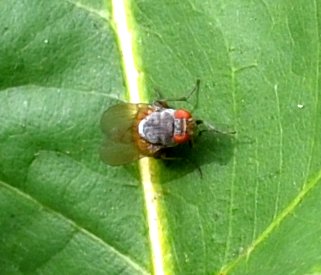
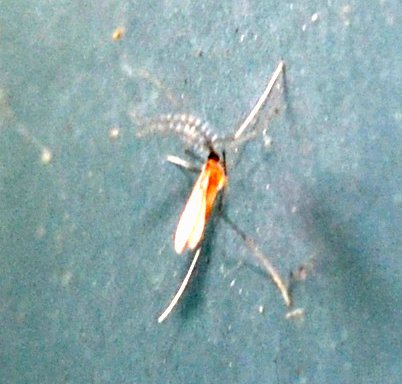
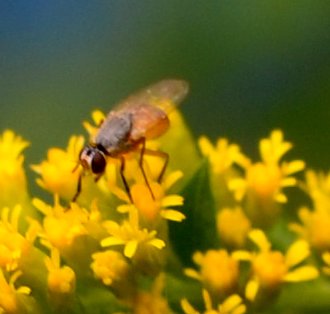

I dont't know if you remember this little fly. It last showed up last year on August 28th. This year, August 29th! Its name gives it away. Trichopoda means hairy legs, and pennipes means feathery legs. Take a good look at the fur-like structures on the hind legs. The last two images are of T. pennipes and T. plumipes from last year this week. {"Plumipes", of course, means feathery legs.}Last year T. plumipes was first spotted (by me) on September 2.
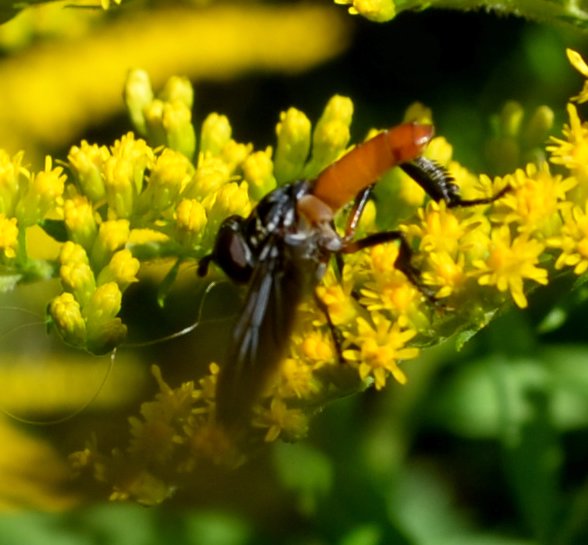
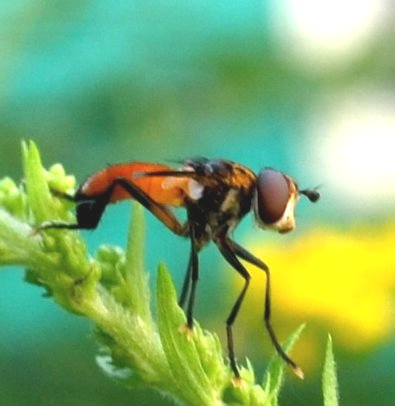
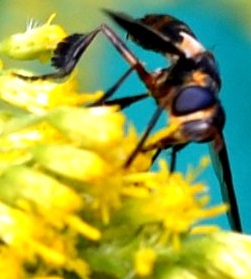
Froggy is still here! She is probably a little female - one of the distinctive characteristics is whether the ear-drum is bigger (male) or same size (female) as the eye. I especially love the sly little smile in picture 2.

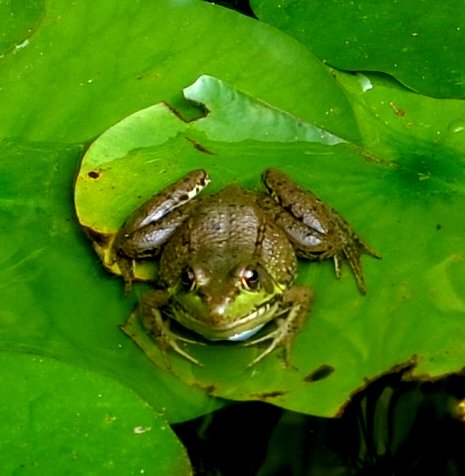
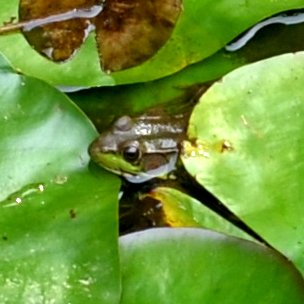
Here are this week's harvestmen. They seem to like one particular pattern (which I also like a lot).
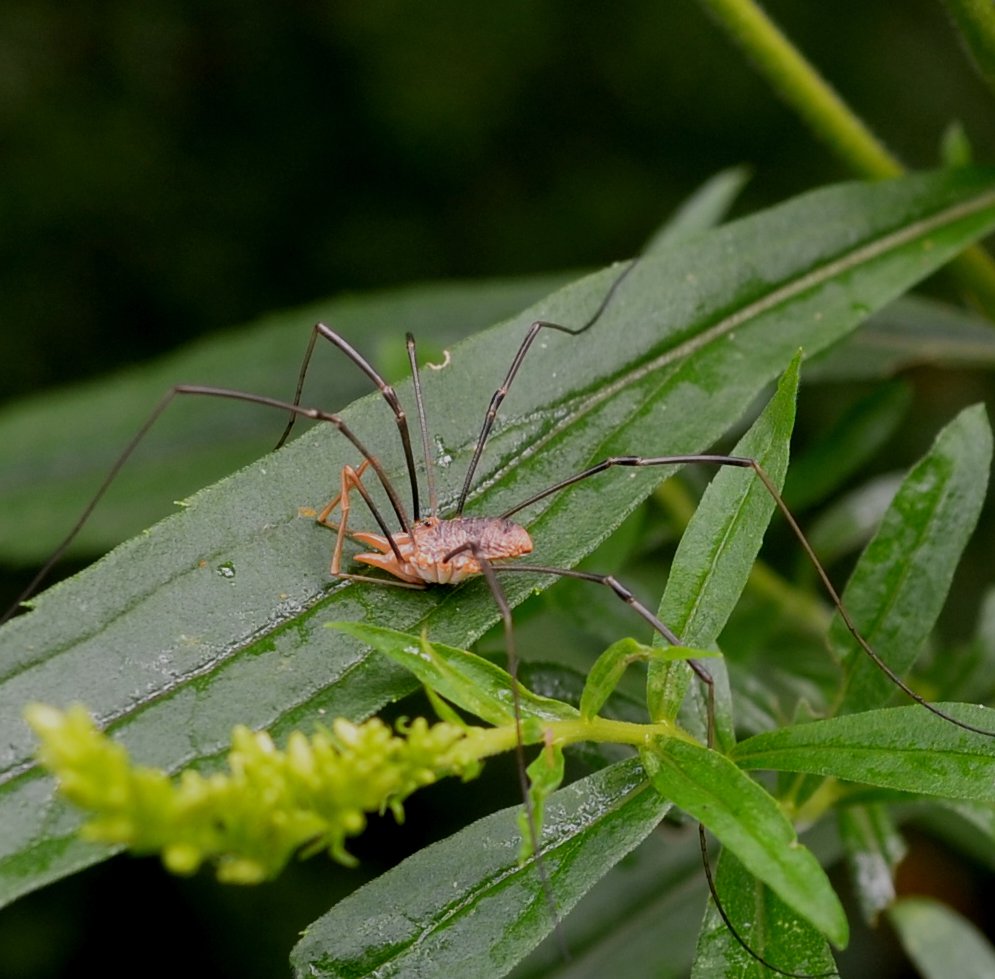
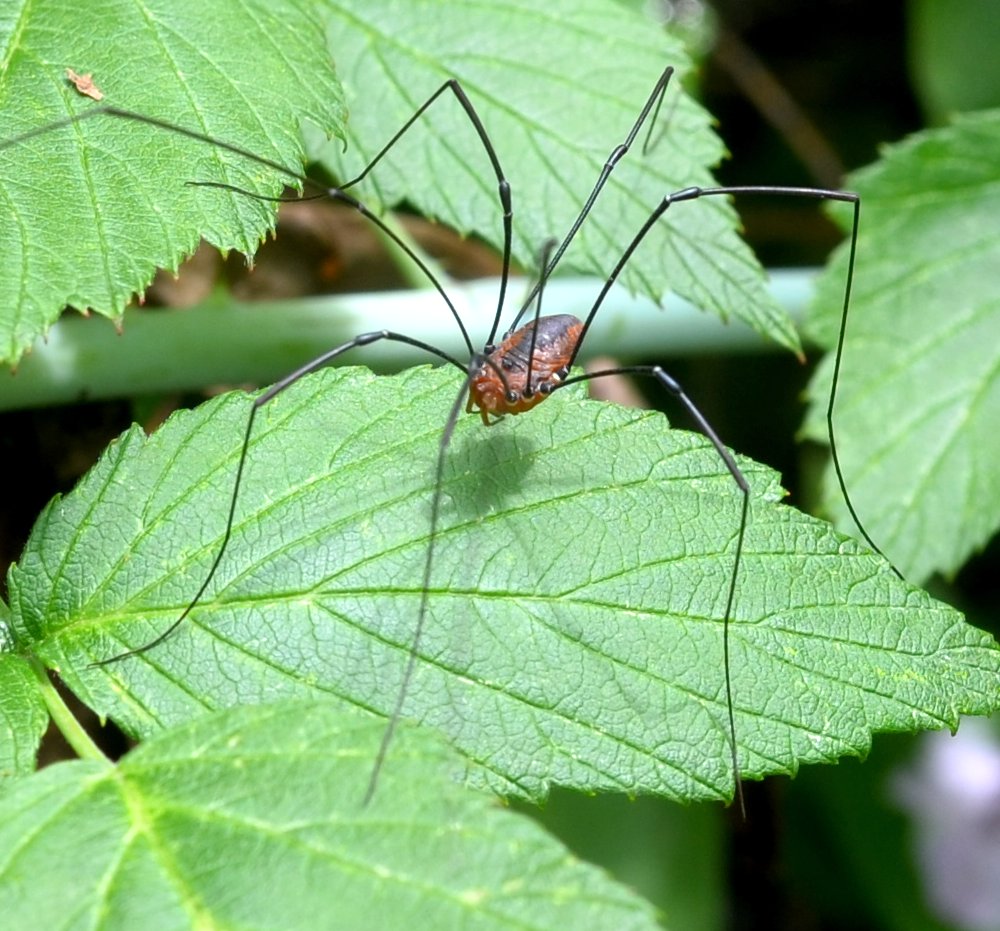
Some Orthoptera(Crickets. Grasshoppers, and Katydids): We were quite tickled to see several kinds! There were two kinds of crickets: the nice tannish Jumping Bush Crickets and the black ground cricket The grasshopper seems to have cloned itself - or there are a fair number of them.

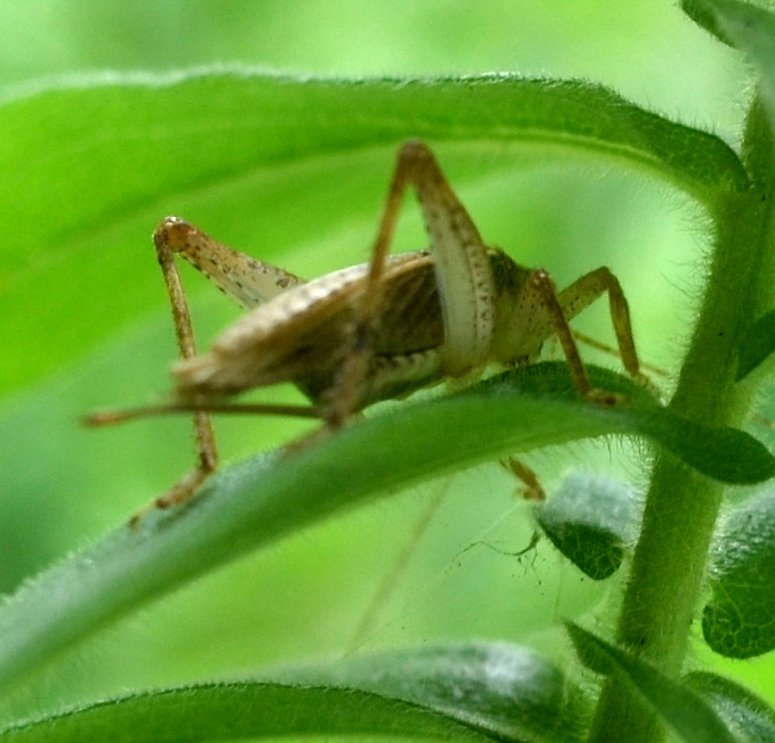
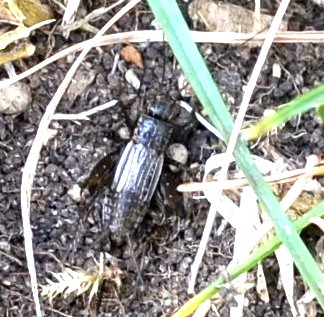

We did have quite a few moths, some old, some new. The first one is an old friend, but the others are unfamiliar to me. Number three reminds me of a fabric print, how about you?
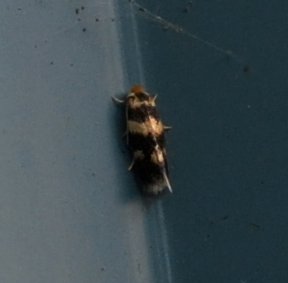
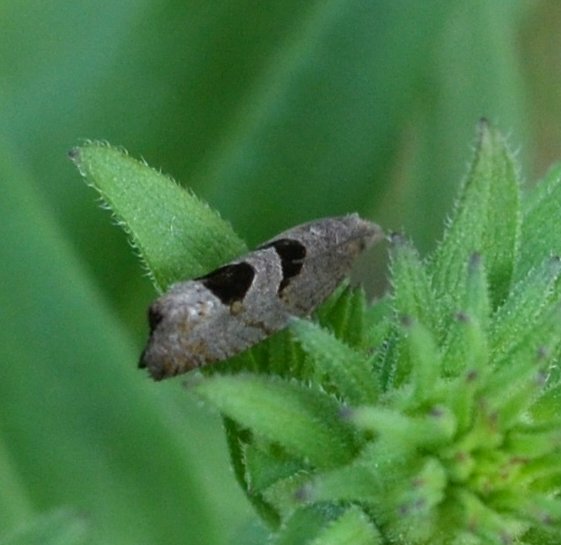
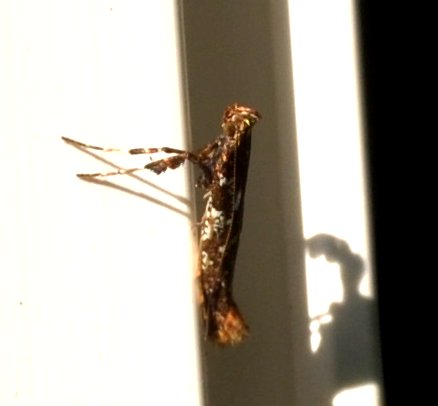
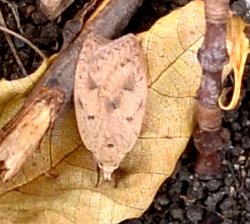
Four more unfamiliar moths. Except for the last one, a caterpillar of the hickory tussock moth. I've seen pictures of it from other readers, but this is the first time it's made its appearance here.
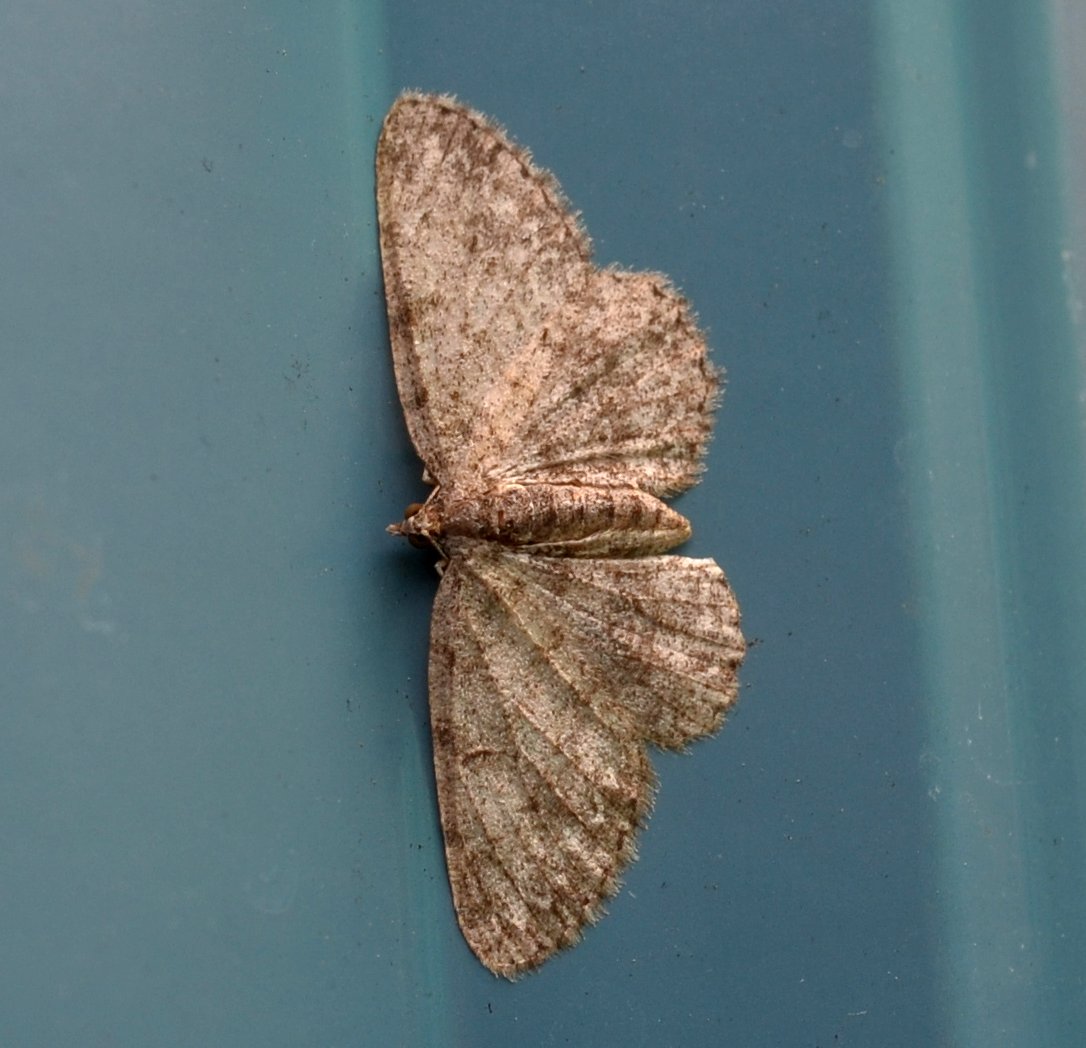

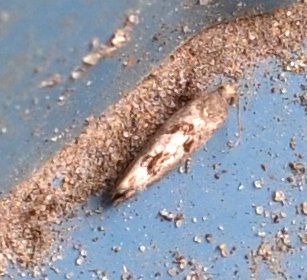
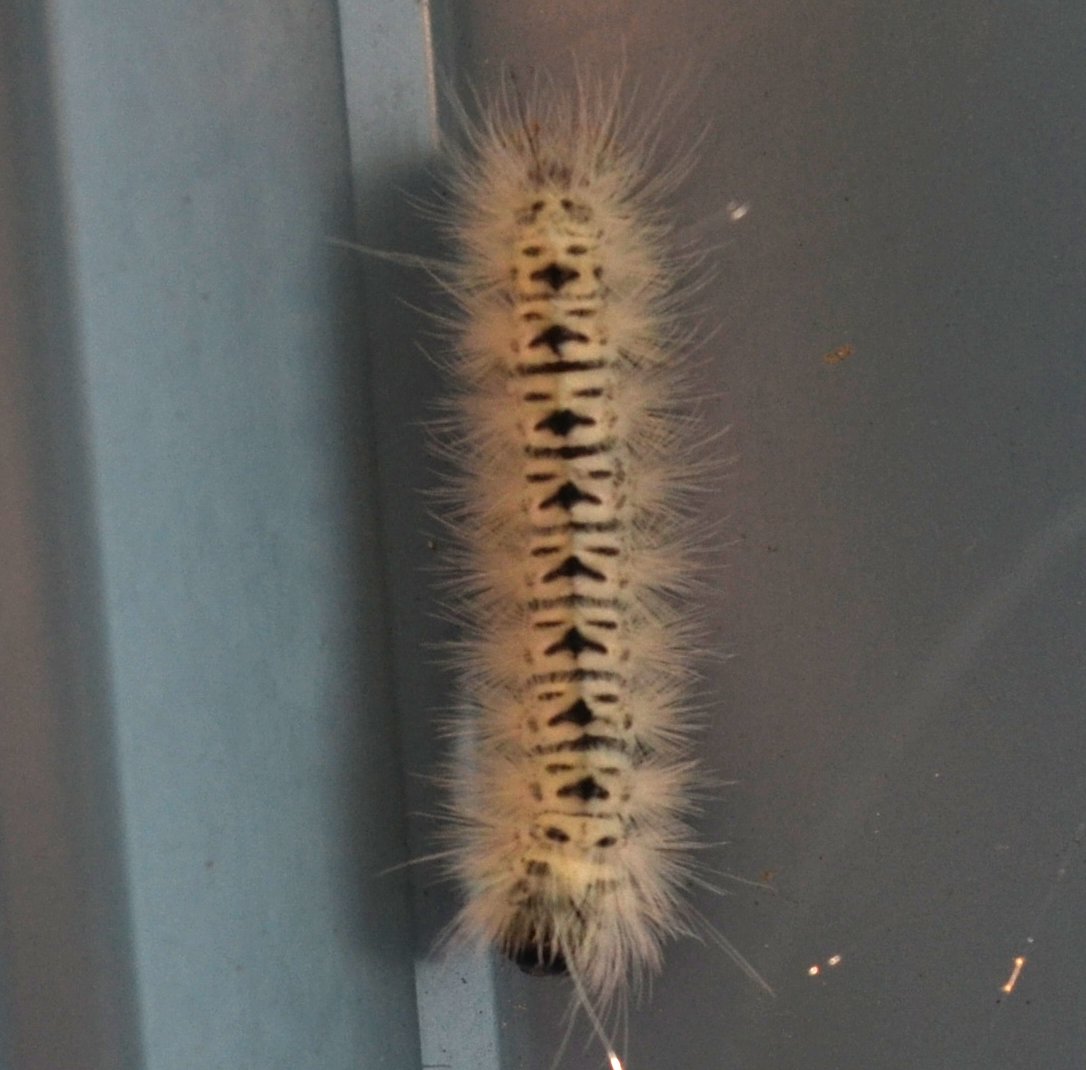
Here are a few I can only call "mysteries".
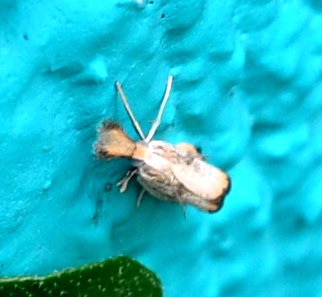

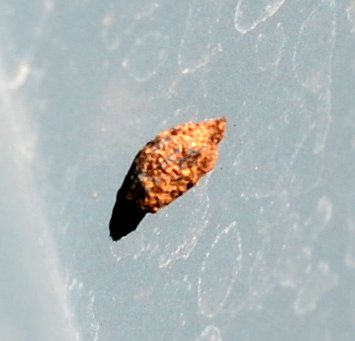
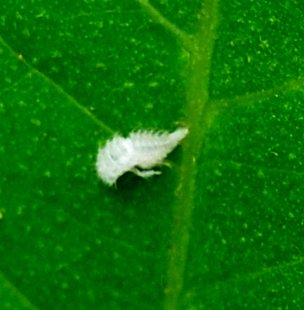
These oak galls are not unknown. What a varied lot they are. The rain takes on the role of a character in this drama of backyard life. I've been looking and looking for a female scorpionfly. But every one has a pigtail or scorpion tail (marks of males), rolled or not.


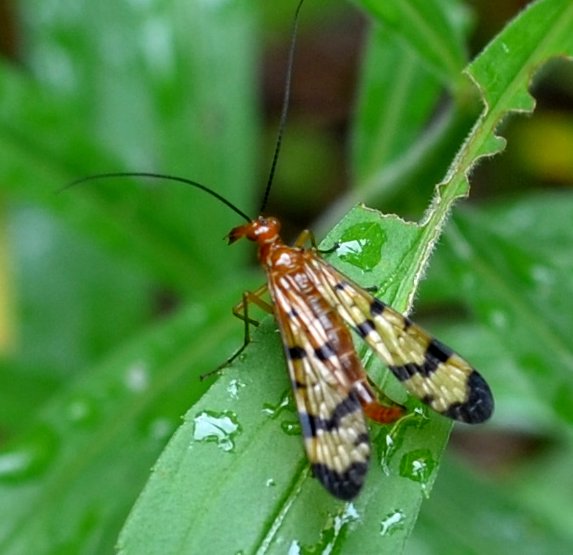
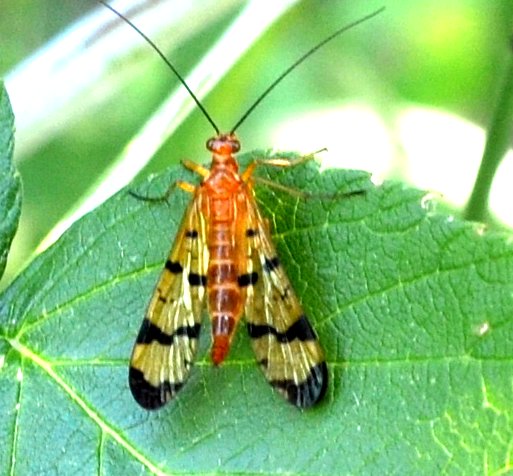
Finally, a few spiders! First of course is the most common house spider, a female. Then we see a few tiny tiny crab spiders - a pink one and (two views) a yellow one.
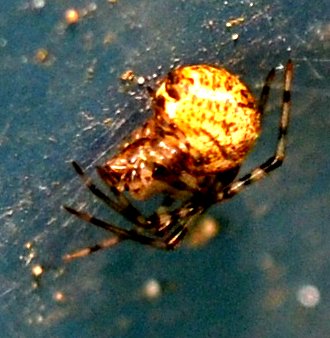
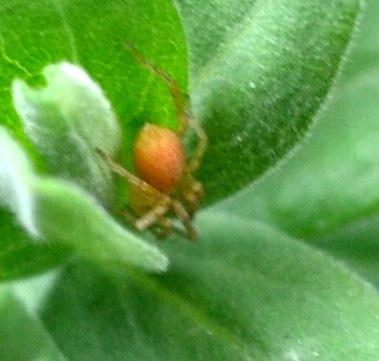
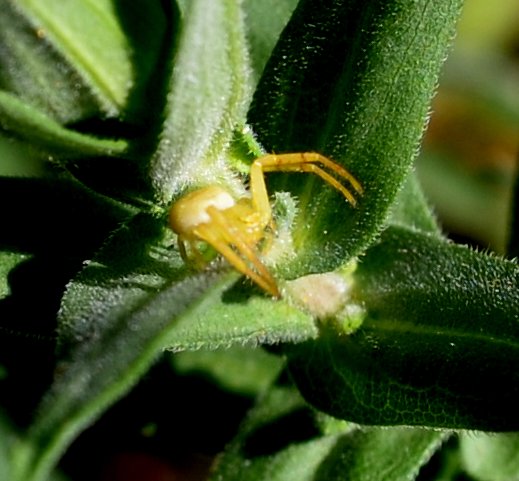

Our old friend, the grass spider with its pointy tail. And remember the all-red common house spider male. You certainly recognize the baby toad, who seems to have come back to the pond, possibly for a nice bath. And once more, the odd couple, Tripper and Big Bunny.
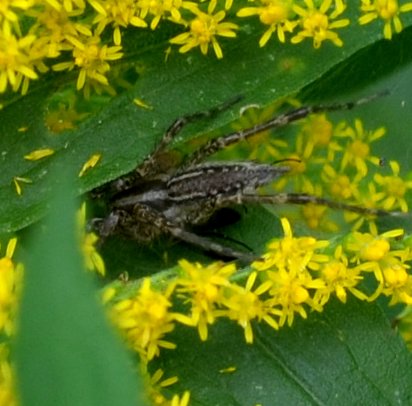

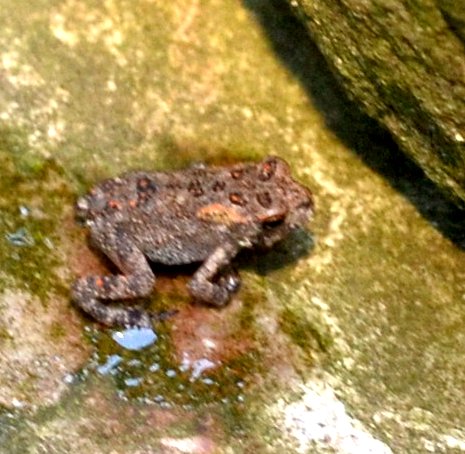
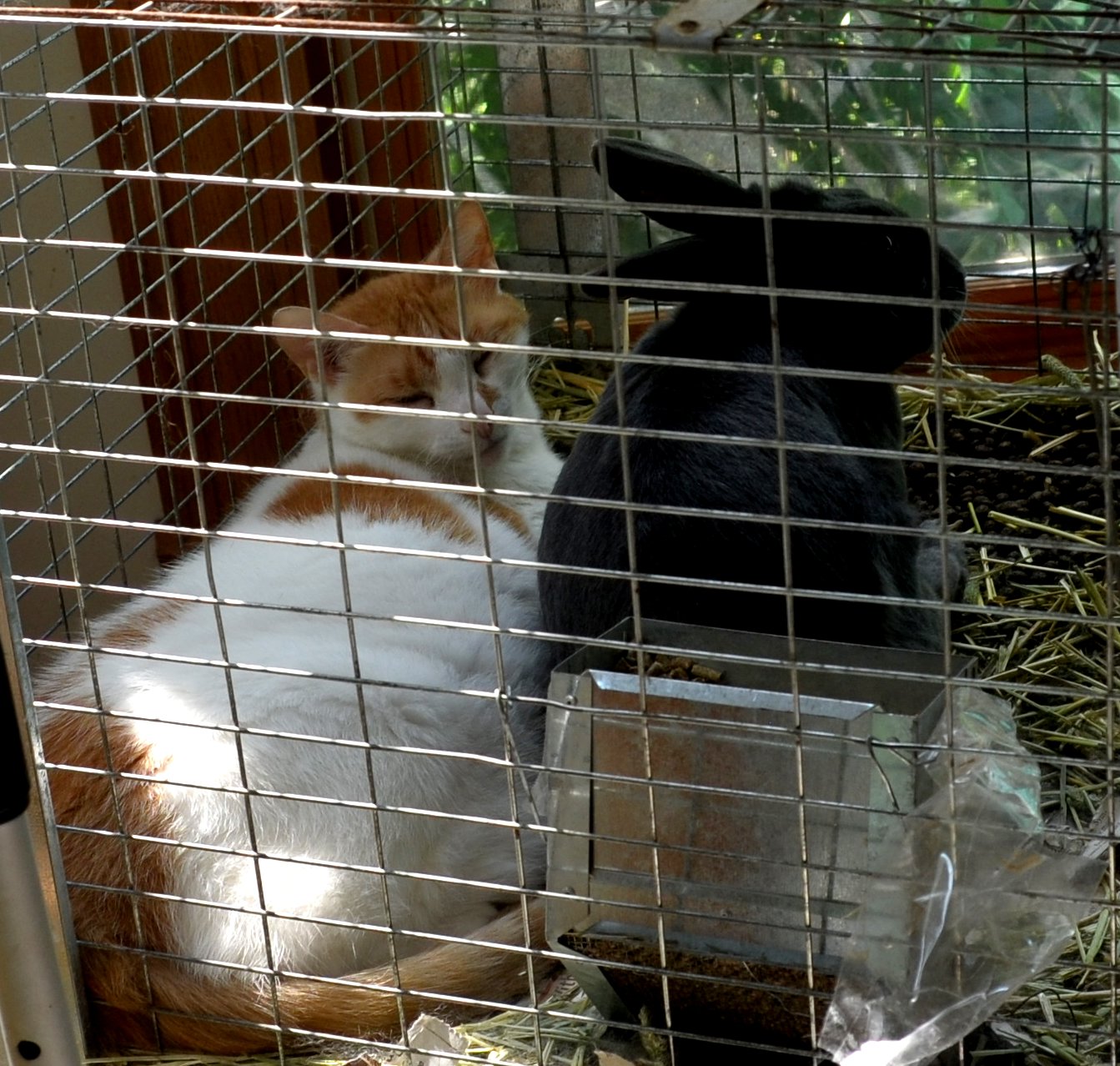
Now for the piece of resistance, wasps and bees love goldenrod. Here is a little black unnamed one. And a side view and a frontal of the bee wasp Philanthus gibbosus.
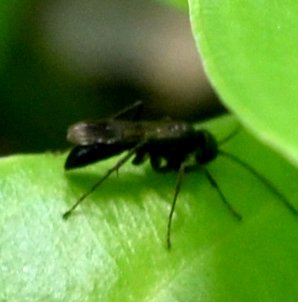
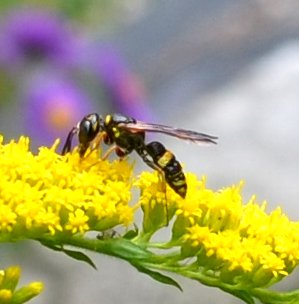
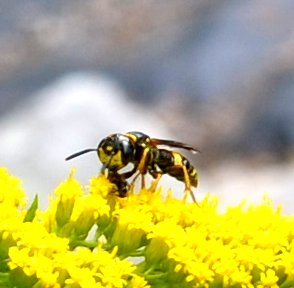
Here is the wasp Eumenes fraternus, with its comma marking on the top of the abdomen. Next up, Cerceris clypeata, also called the Weevil Wasp. Suspect it is C. clypeata when the bands about the abdomen don't go all the way around. Its face seems to have two vertical stripes from the top.
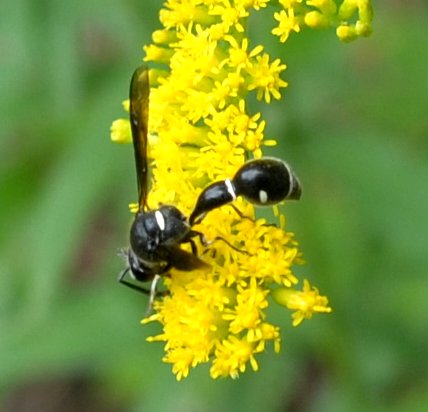
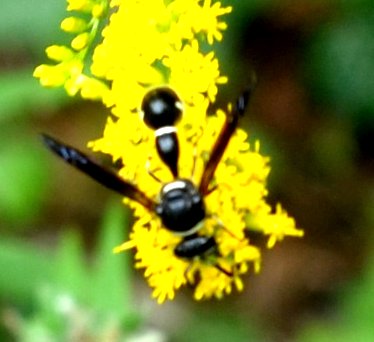

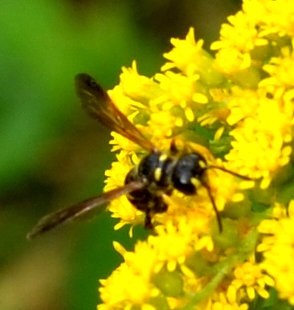
This is either the Great Black Wasp or, as it should have been named, the "Great Blue Wasp", although it does occur in brownish wings, if it catches the light right. One of the Thread-waisted wasps, the Great Black is majestic in blue and posture.
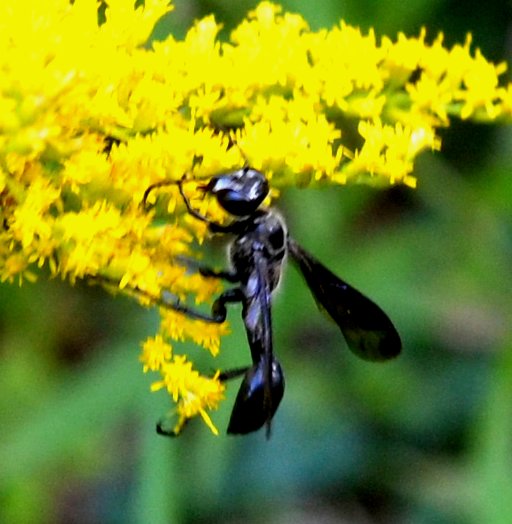
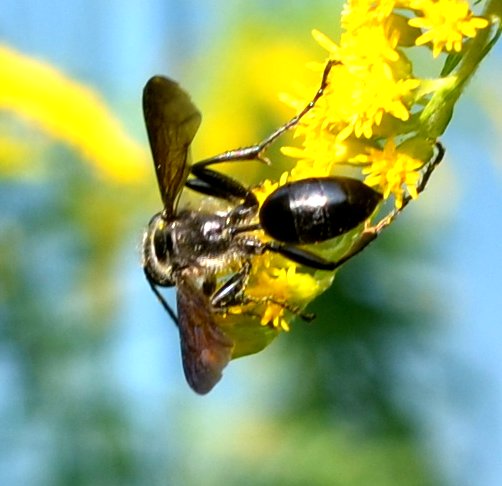
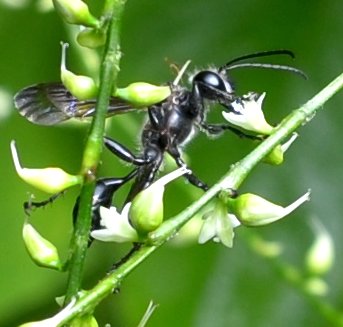
Thanks once more for standing here with me in the sunny goldenrod. It is really one of my favorite seasons. See you next week! (Sorry this is a bit late. My connection to the server across campus has been dead since the end of last week. And it is a long weekend (Labor Day)! It will be up and running after my friendly IT person flips the switch or otherwise activates my connection...)
Love, Martha
Back to August 27, 2017
Forward to September 10, 2017
Back to 2017 menu
Back to main menu
copyright Martha O'Kennon 2017

















































































































